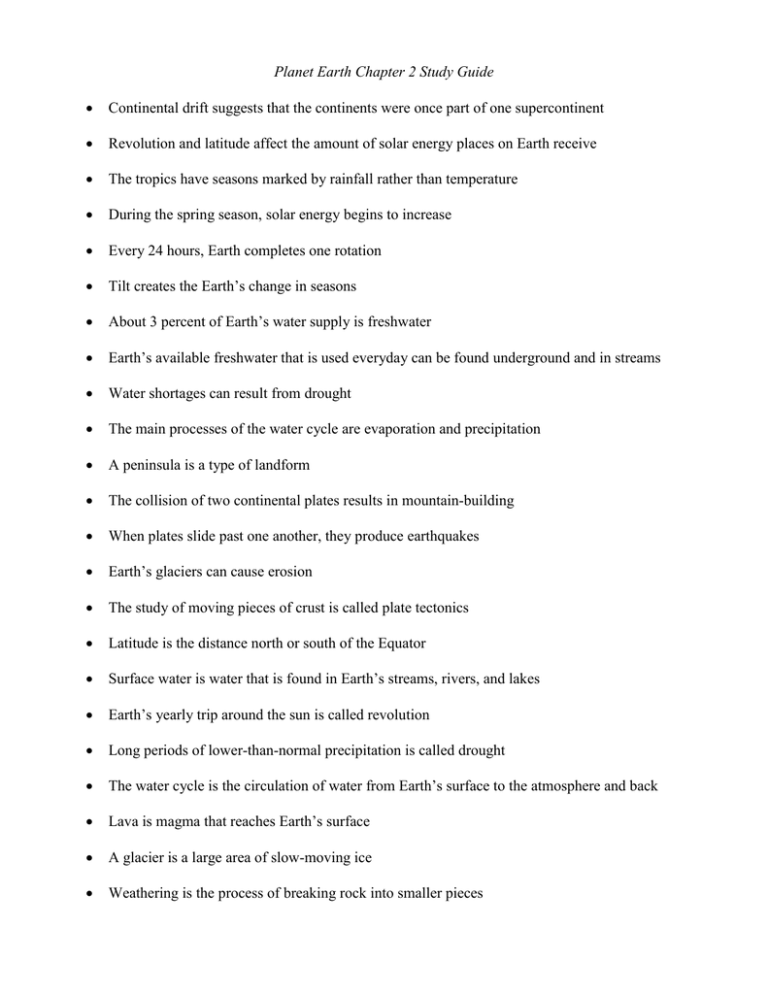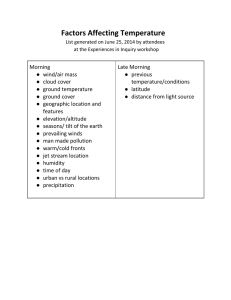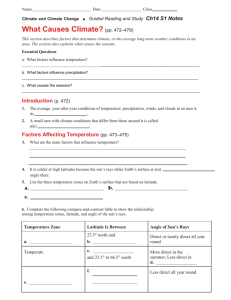Planet Earth Chapter 2 Study Guide
advertisement

Planet Earth Chapter 2 Study Guide Continental drift suggests that the continents were once part of one supercontinent Revolution and latitude affect the amount of solar energy places on Earth receive The tropics have seasons marked by rainfall rather than temperature During the spring season, solar energy begins to increase Every 24 hours, Earth completes one rotation Tilt creates the Earth’s change in seasons About 3 percent of Earth’s water supply is freshwater Earth’s available freshwater that is used everyday can be found underground and in streams Water shortages can result from drought The main processes of the water cycle are evaporation and precipitation A peninsula is a type of landform The collision of two continental plates results in mountain-building When plates slide past one another, they produce earthquakes Earth’s glaciers can cause erosion The study of moving pieces of crust is called plate tectonics Latitude is the distance north or south of the Equator Surface water is water that is found in Earth’s streams, rivers, and lakes Earth’s yearly trip around the sun is called revolution Long periods of lower-than-normal precipitation is called drought The water cycle is the circulation of water from Earth’s surface to the atmosphere and back Lava is magma that reaches Earth’s surface A glacier is a large area of slow-moving ice Weathering is the process of breaking rock into smaller pieces Rotation is one complete spin of Earth on its axis Runoff is precipitation that flows over land into rivers and oceans Earth’s rotation explains why day changes to night To allow for the fraction of a day in Earth’s revolution (365 ¼), we add an extra day, February 29, every four years Earth’s axis is tilted at 23 ½ degrees from vertical During summer months, the Earth is tilted towards the sun Because of Earth’s tilt, the Northern and Southern hemispheres experience different seasons Rain, snow, sleet, and hail are all examples of precipitation Earth’s rotates and revolves counterclockwise Humidity is the amount of water vapor in the air expressed as a percentage Latitude affects climate Weathering is the process by which rock is broken down into smaller pieces




